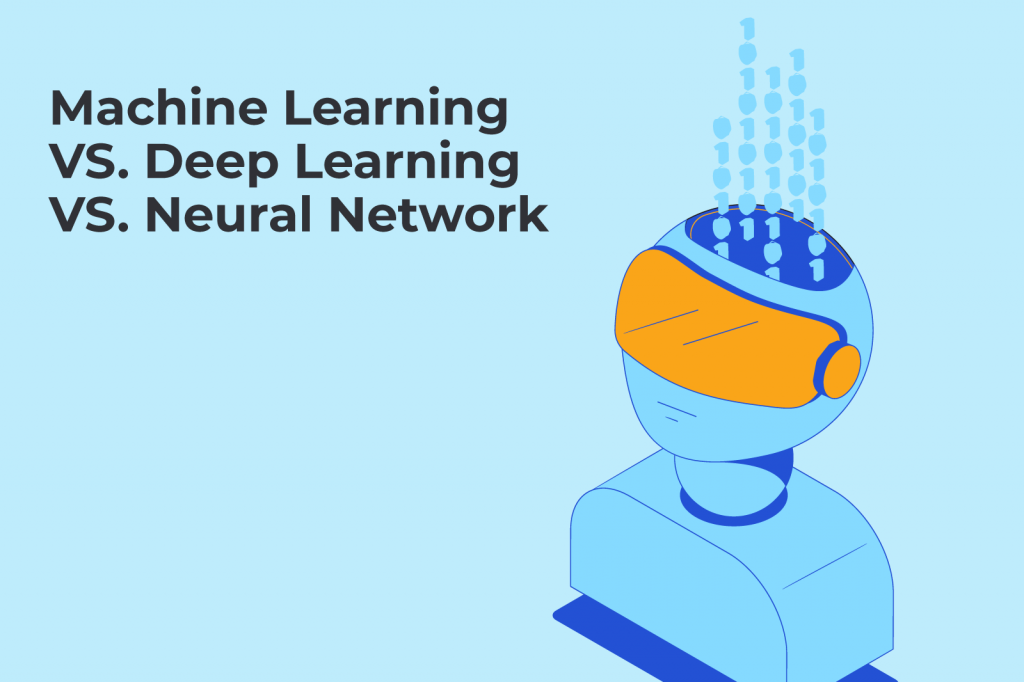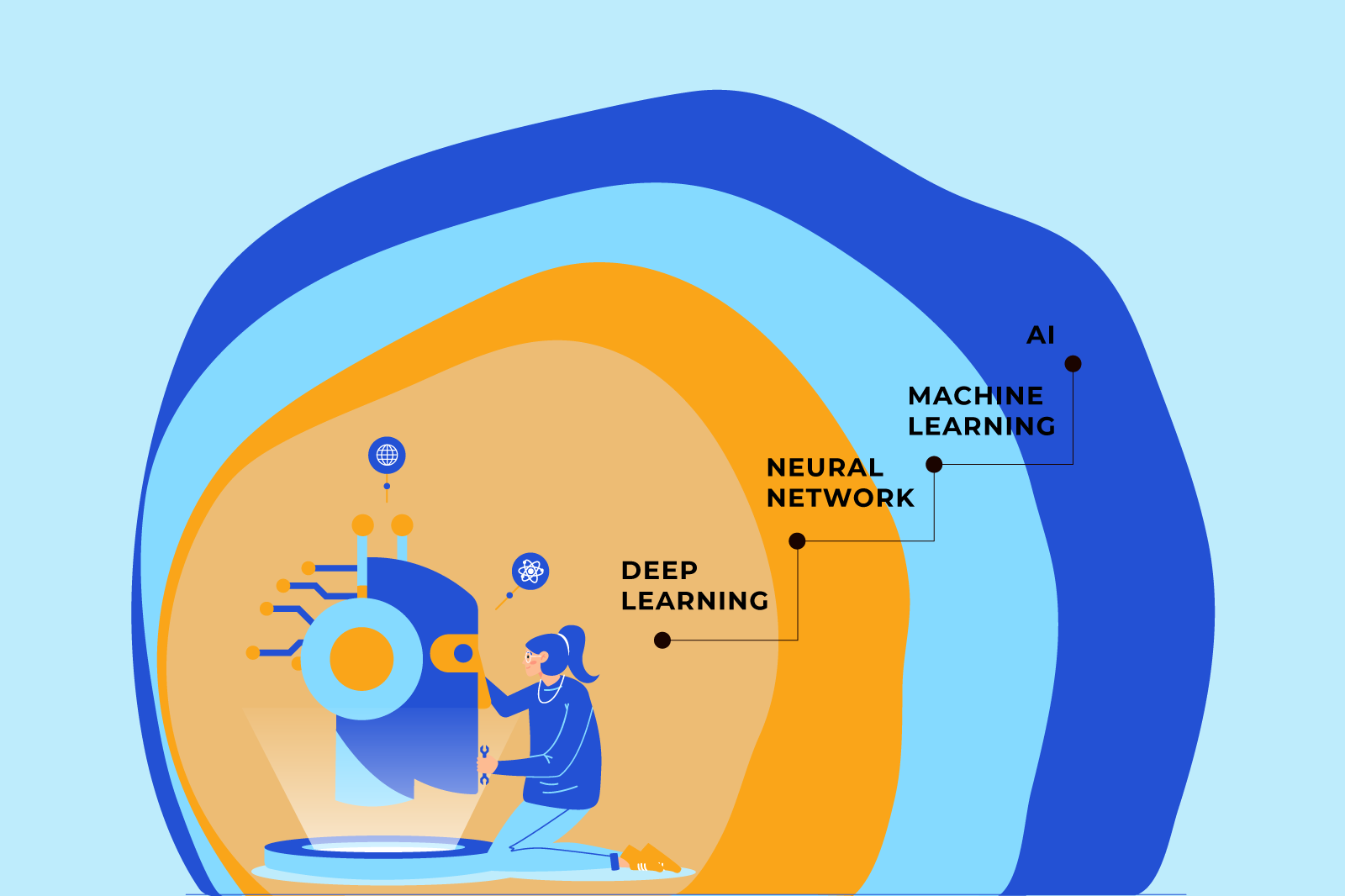
Machine Learning VS. Deep Learning VS. Neural Network
With AI being such a popular concept these days, there is a lot of talk about machine learning, deep learning, and neural networks. Sadly, similar to anything that’s pretty new, there are a lot of misconceptions surrounding these terms and concepts. In this article, we decided to bring a bit more clarity and dive into their fundamental differences and, maybe more importantly, their relationship and shared principles.
Without further ado, let’s dive into it.
What is the key relationship between machine learning, deep learning, and neural networks?
Before dwelling on what makes them unique, we believe it’s essential to understand their relationship and similarities. Firstly, we must understand that all three are a subset of AI as a field. AI studies how a computer system can mimic human cognitive functions such as problem-solving and learning; in a nutshell, AI relates to everything that is machine learning, deep learning, and neural networks.
To help you understand their interdependence, we compared the stages of an education system. Firstly, the entire field of education will be considered AI.
In the field of education, we have several essential stages based on the level of complexity, such as high school education, bachelor's degree, or doctor's degree. So what’s what in our case?
Machine learning as high school education
ML is a subset of AI referred to as machines that learn from data. ML algorithms can perform specific tasks without being specifically programmed - they read and interpret data and make predictions based on those.
Neural networks as the bachelor’s degree
Similar to the education system, having a bachelor’s degree is more difficult than graduating from high school. Neural networks are a subset of machine learning; they have a structure inspired by the human brain comprised of artificial neurons and nodes. Neural networks are machine learning modules tasked with making decisions like humans.
Deep learning as the doctor's degree
Deep learning is currently the most advanced system. It’s similar to neural networks but is far more complex and works with vast amounts of data. When writing your doctor’s thesis, you need far more research, data, and effort to succeed.
Keeping things simple, there is a clear relationship between all three concepts, as machine learning is a subset of AI, neural networks are actually machine learning modules, and deep learning is a subset of neural networks with added complexity and “depth.”

What's the difference between machine learning and neural networks?
The most significant difference is based on the way they can make decisions. Machine learning systems make decisions based on the data they analyze and what they learn from it. In contrast, nodes make decisions independently because neural networks mimic the human brain with artificial neurons and nodes. Machine learning modules have a more straightforward structure, such as a decision tree model, which means they cannot make decisions by themselves but rather learn the decisions that need to be made.
What's the difference between neural networks and deep learning?
Deep learning is closely related to neural networks because, in essence, they are a more complex “species” with more layers and nodes than a standard neural network. Any neural network with a bigger “depth” - more than three layers is considered a deep learning algorithm. Deep learning modules are more complex than neural networks because of the more dense structure; thus, they are considered more efficient.
The downside is that this complexity comes with a cost, as deep learning algorithms work with millions of datasets and require a lot of training, while neural networks can work with much lower numbers (thousands of data sets).
A popular deep learning algorithm application is in self-driving cars. To make the best decisions by themselves, they must be fed with millions of pictures regarding traffic situations, signs, and an immense level of video footage to learn effectively.
What's the difference between machine learning and deep learning?
Remember when we said that neural networks are machine learning modules? Logically, deep learning modules can also be considered machine learning algorithms- true. The most significant differences are in complexity and the amount of data they need:
- Machine learning algorithms have a more straightforward structure, such as a decision tree model. Deep learning algorithms have a complex structure based on artificial neural networks with multiple layers and nodes, similar to a human brain.
- Depp learning algorithms don’t require the same level of human intervention. Machine learning modules classify and sort information to make decisions, and if the output/result is not the expected one, then the software engineer will adjust it. Deep learning doesn’t need guidance as it learns from its mistakes to improve the quality of the output, rather than relying on an engineer to make the adjustments.
- Machine learning algorithms need fewer amounts of data, while deep learning algorithms need vast amounts of datasets to reduce or eliminate inconsistencies and output high-quality decisions and interpretations.
Machine Learning VS. Deep Learning VS. Neural Network - The Conclusion
In conclusion, despite much clutter concerning these subjects, all three fields are highly related but have some major differences. Machine learning is a subset of AI, a neural network is a subset of an actual machine learning algorithm that mimics the human brain's structure, and deep learning algorithms are more complex variants of neural networks with more layers and nodes that require a vast amount of data/input.
Looking for an experienced software development partner to declutter your AI development efforts?
Our team has extensive experience creating complex software solutions from the ground up while adding AI capabilities to the mix. Let’s have a chat and talk about your next groundbreaking project.
Article written by Iulia Filimon, NLP Engineer
Iulia designs and develops algorithms and models that enable computers to understand, interpret, and generate human language. She participates in building the first innovative AI company's solutions and exposing them to clients.